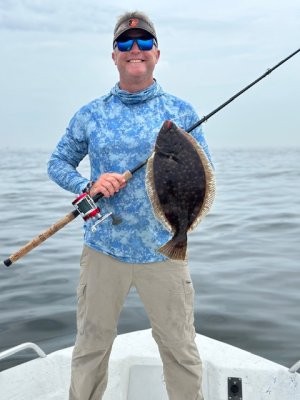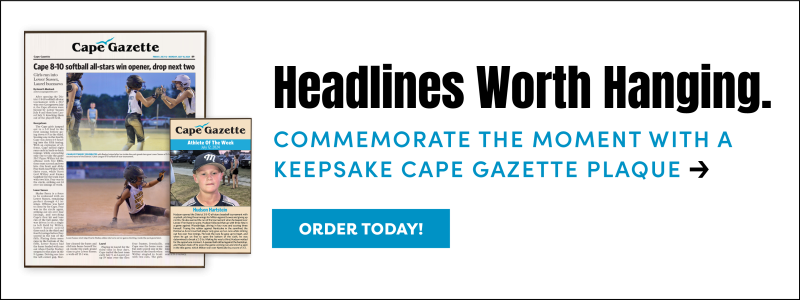We have suffered through a very cold and windy spring with small-craft advisories more days than not. The first week of June saw warm temperatures and winds at 10 knots or less. Let’s hope that sets the stage for the remainder of the summer.
For the first time in a few years, we had some lean and hungry blues around this spring. These 7- to 8-pound beauties were caught from the beach and from Indian River Inlet. The beach-caught blues took cut bait, while those taken from the inlet hit metal lures. A few from both locations hit surface lures. Not to be left out of this are the fishermen at the fishing pier at Cape Henlopen State Park. They too saw some blues caught on cut bait and surface lures.
On the subject of the fishing pier, it is the best bargain in fishing in Delaware. You pay your $5 entry fee to enter Cape Henlopen State Park and you are good to go all day on the fishing pier. That includes as many fishermen you can stuff in your vehicle. Breakwater Tackle is found at the entrance to the pier, and they have all the bait and tackle you will need. There is even a pavilion and restrooms, but they are a long walk from the end of the pier.
Most pier fishermen have some sort of wheeled carry-all to transport their tackle and lunch out to the pier. I use a hand cart with a 5-gallon bucket and a small cooler to carry mine.
Fishing from the pier is 99% bait and 1% lures. I like to catch spot, croakers and kings, and will use a top-bottom rig baited with FishBites bloodworm. I will fish the pier during the last half of the incoming water and the first half of the outgoing. Low tides do not have enough water to hold many fish. I do have at least one or two metal lures and at least one surface lure just in case the blues do show up.
When fishing from my 16-froot tin boat, I will put it in the water over at the Lewes boat ramp and run down to the ferry wall. Once there, I will bait up a circle hook with a live minnow and cast it into the rocks. I allow the minnow to swim around the rocks until I feel it has worked that area without result, and then I reel it back in and move toward the end of the wall. I will repeat this process all the way down the wall until I reach the end.
At this point, I should have caught a flounder or three and will begin to work the scour hole at the end of the wall for spot, croaker and kings. I will drift around the hole with a top-bottom rig baited with FishBites bloodworms.
Sometimes the fish are away from the wall. I will make a few drifts off the end of the wall being careful not to enter the ferry channel.
After that, I will cross the channel and begin fishing between the ferry channel and the state park fishing pier. There is a smaller, private fishing pier between the two that you must give way to as well.
Most of the time, if there are fish here, they will be tightly packed. You will be in them and out in a very short time. Use your SONAR and GPS to hone in on the location and make short drifts.
If the tide is high, the next area to fish is the flats on the other side of the fishing pier. The bottom there goes up and down in waves and can hold fish on high water. Drift along with either a top-bottom rig or a live minnow. Don’t give up after the first drift. Keep at it until you have covered the area completely.
The next structure is the Inner Wall. My experience here is less than stellar. I have caught some very nice spot and my friend Larry Weldin caught a big triggerfish on the inside of the wall, but otherwise I have come up empty.
Moving to the Outer Wall, I will begin by casting a black back Rebel WindCheater to the turbulent water at the south end of the wall. Sometimes there will be bluefish there, and it only takes a few casts to find out if anybody’s home.
Once I move to the oceanside of the wall, I will cast my WindCheater to the rocks trying to get as close as possible to them without getting up on them. Let the plug rest on the surface for a few seconds before cranking it back to the boat. You may also cast a surface lure instead of the Rebel and work it in the same pattern.



















































